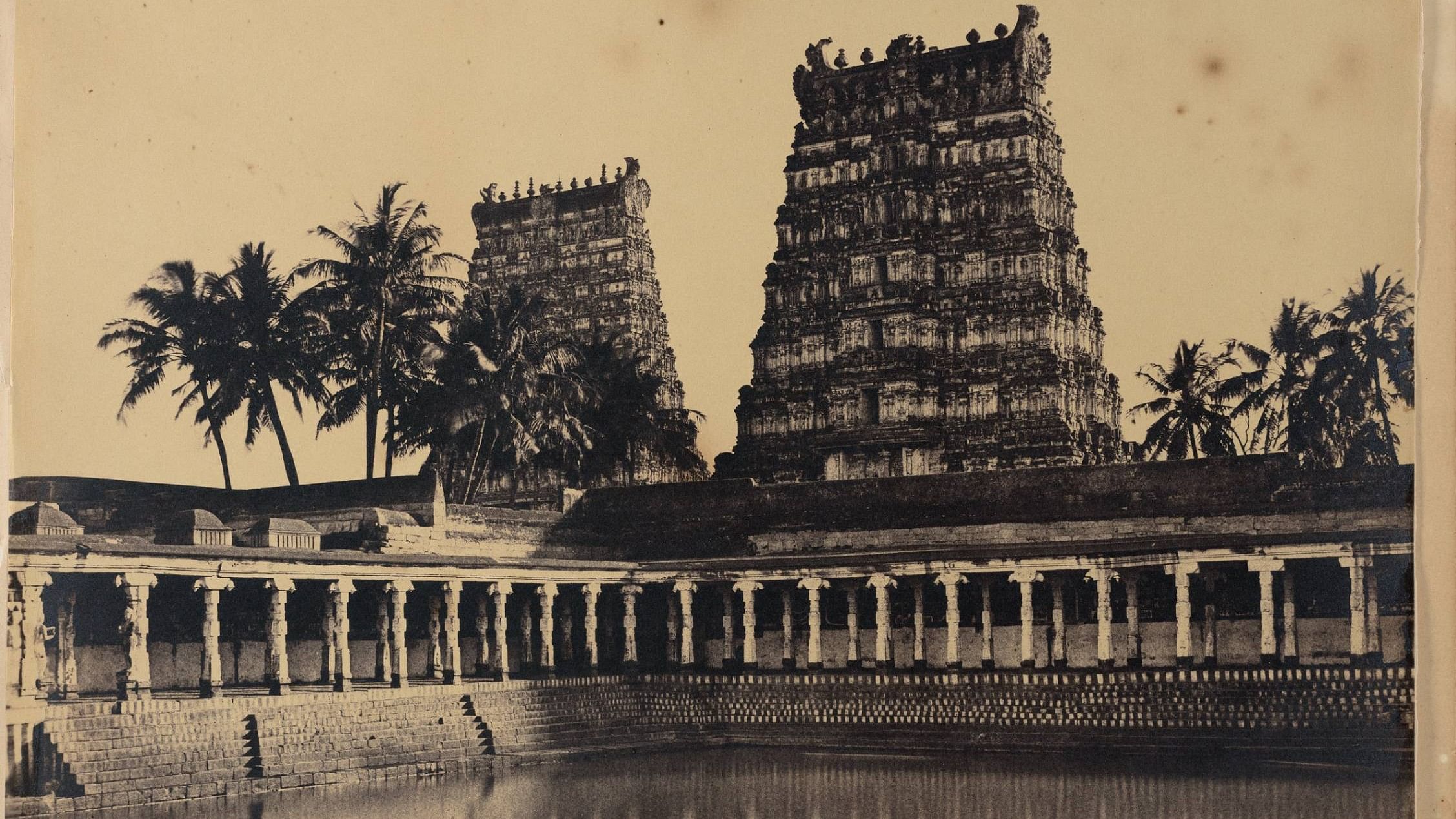
The Great Pagoda by Linnaeus Tripe, 1858.
Pic courtesy: DAG
Stirring visuals have always textured our understanding of history, and the landmark exhibition on photography from the house of DAG, Histories in the Making: Photographing Indian Monuments 1855-1920, takes us through the corridors of such carefully preserved memories that have shaped our perceptions and given texture to our imaginations.
These precious picks — some of the earliest photographs of archaeological intent — find expression on the walls at this exhibition that spotlights the photography of notable Indian monuments during the latter half of the 19th century. Plucked from the depths of the DAG archives, each image tells a sepia story. There is an umbilical link between the captures and the field surveys conducted in ancient India, and each photograph brings in a layered connection with the present day by breathing life into the chronicled past.
Pic courtesy: DAG
Pic courtesy: DAG
Pic courtesy: DAG
Ramisseram Pagoda (Long Side Aisle) (Ramalingeswara temple, Rameswaram), Edmund David Lyon, 1867.
Part of the Pillar of Kootub (Qutub Minar, Delhi) by Felice Beato, 1858.
The collection knits together the fields of politics, archaeology, and academics through the progression of the visual narrative. British India was the first country beyond the realm of Europe to have professional photographic studios. There were many meritorious hands in the country, lauded globally, for shaping the visual sensibilities of their audiences and fusing cultural insights with scientific advances.
Famous British photographers of the era brought forward a well-groomed gaze at the happenings while the images clicked by their Indian counterparts fleshed out tiny layered details that added a sense of depth and dimension to each inclusion in the exhibition. It is as if they converse with the onlooker, shaping our perception of monuments and events.
Lala Deen Dayal’s iconic capture of the Sanchi Stupa stands tall on the walls, in a harmonious interplay of light and texture in solemn composition. Hailed as the global Indian photographer of the 19th century, he was appointed court photographer to Mahboob Ali Khan, the sixth Nizam of Hyderabad and chronicled royal life during this period. There is a sense of grandeur in the simplicity of the imposing edifice as it stands silently in the frame.
Fine detailing adorns Felice Beato’s ‘Part of the Pillar of Kootub’ (Qutub Minar, Delhi). Beato, an established war and travel photographer of the 19th century, is known for his precise, expressive visual chronicles of the aftermath of the revolt of 1857.
The creations are an ode to the cultural and architectural tapestry that personifies the monuments in the country. Linnaeus Tripe’s ‘The Great Pagoda’ and ‘View of the Sacred Tank in the Great Pagoda’ (Meenakshi Sundareshwara Temple, Madurai) are a testament to his tenure as the official photographer of the Madras Presidency. His photographs of Srirangam, Tiruchirapalli, Madurai, Pudukkottai and Thanjavur are all breathtaking works of art.
Samuel Bourne and Charles Shepherd’s ‘Mount Abu, Interior of Jain Temple’ brings alive the intricacies of an ancient design grammar. Symmetry echoes in Edmund David Lyon’s Ramisseram Pagoda (Long Side Aisle) of the revered Ramalingeswara temple, in Rameswaram.
These missives from the past celebrate the erstwhile techniques of taking photographs and the materials the visuals were worked in. Curated by Dr Sudeshna Guha, the exhibition brings together a tremendous latitude in the objects that were created through photographic technology, including paper and glass negatives; collotype, albumen, and silver gelatin prints; plush photography chronicles in albums that were created as keepsakes; lithographs; stereographs; cartes-de-visite, and cabinet cards. “The exhibition builds upon the connected history of photography and field surveys of India’s past to display the power and authority of the photograph and photographic collection as historical objects to think with,” says Dr Guha.
The collection effectively brings out the beauty of the first two decades of the 20th century in a string of stunning visuals seen through diverse eyes, the highlight being the earliest postcards of Indian monuments. Ashish Anand, CEO and managing director, DAG, says, “The mid-19th century marked a time when photography was still in its infancy, and yet, British India emerged as the first country outside Europe to establish professional photographic studios. The photographs from this period, ranging from the 1850s to the early 20th century, are not merely records of historical monuments; they are artefacts that reveal much about the socio-political climate of the time.”
The exhibition is on till Oct 12 at DAG, New Delhi.